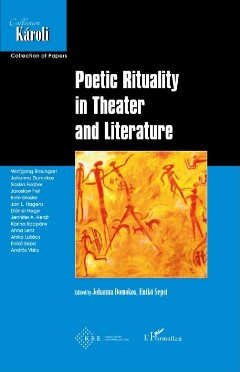Seite 83 [83]
SCRIPTED AND EMBODIED RITUALITY IN A YOIK-NOH PERFORMANCE
that you need... do not ask me what you need,
love, and dare to love...
yourself, then you can love others, too...
love!
(translated by R. Eriksen and H. Gaski)
And later:
do not be afraid little brother
fear rather,
that there will come a time
when such guestions do not
even crop up in thoughts...
if man forgets that
he is a part of nature, of life,
but
don't be afraid little brother
life takes care of its own creatures,
people disappear, peoples too,
epochs end;
(translated by R. Eriksen and H. Gaski)
As for the third voice in the play, known as the jiuati in Noh theater, the chorus
was imagined — just as in Okura’s piece — as being personified by Valkeapää’s
yoiking band, who served as commentators of the story in yoiking style. That
means that the commentary did not take the form of words put to melody, but
rather — characteristically of the yoik — by melody carried by the vowels of
semantically meaningless short particles (such as, “heeei” “oooooh”, “loooy,”
or “laaaa”).
TWO DIFFERENT PERFORMANCES OF THE PLAY
When we watch the different performances of the play, all of the poetic and
musical elements, plus the directorial instructions and scenographic refer¬
ences for carrying out the actual performance, belong to what we have termed
scripted rituality. These fixed elements contribute to the staging of a play as
well as to the rituality of theater. Moreover, these fixed elements form the
liminal pillars to the creative, transformative process of action from the page
to the action on stage, and thus scripted liminality becomes embodied for the
duration of the performance.
In the performances in Japan in 1995, the spoken parts of the play were read
by two Japanese actors sitting on the right side of the stage (where traditionally
+81 +

